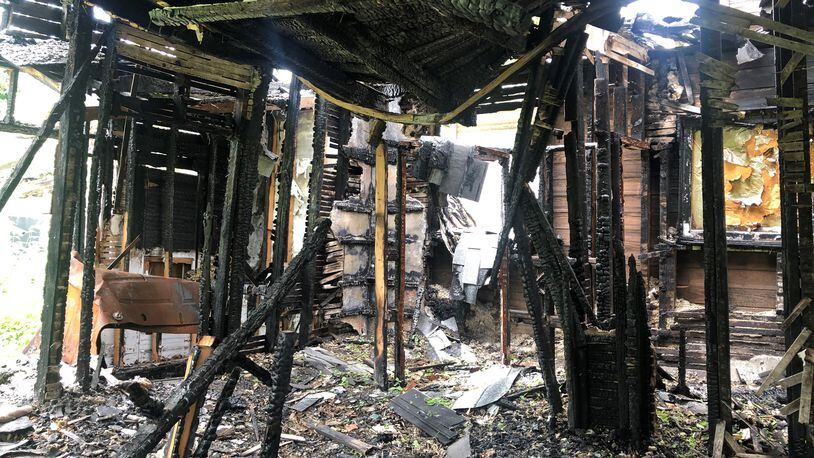Clearing away piles are a priority, city officials said.
But removal costs for piles and some structures damaged by blazes are much higher than other blighted properties, because they must be treated like they contain asbestos, Zimmer said.
“Nobody wants to live next to a pile of fire debris,” he said. “We’re doing our best to keep up.”
Some residents who live near piles and fire-destroyed properties said they have grown impatient waiting for some of these sites to be cleared because they are unsightly and attract other nuisances.
“It makes the neighborhood look bad,” said Jacob Singleton, 18, who lives a few doors down from a pile site at 154 S. Irwin Ave.
Debris from the pile on South Irwin Avenue from a fire earlier this year blows into neighbors yards, said Singleton and other residents. The pile is an eyesore, they said, and people have been illegally dumping couches and other trash on the property.
Cleanup, however, is not cheap, and Dayton reduced funding for nuisance demolition in its 2021 budget, which called for significant citywide spending cuts to address revenue losses from the COVID-19 economic crisis.
Clean-up and removal costs for piles and some fire-damaged properties can be about $20,000 to $25,000 for a standard home, Zimmer said, twice the normal demolition costs.
The Dayton City Commission last fall approved a $219,000 contract with Bladecutter’s Inc. to demolish and dispose of 10 residential structures that were fire damaged or piles.
Most of the damaged, vacant properties are residential, but a few are churches and commercial buildings.
Ten properties on the list have been awarded to a demolition contractor, Zimmer said, while two others have been assigned to a contractor and one is expected to be cleaned up by the owner.
The city also has more than two dozen other fire-damaged properties it is targeting for removal, and staff expect to seek contractors for the work that will likely be split up into multiple bids.
Thirty-one of 38 properties awarded or assigned to demolition contractors or that the city hopes to bid out in the near future are piles, according to city data.
The other properties are listed as having major or total damage.
Funding for fire-damaged-property demolition comes out of the city’s general fund, which was pummeled by the coronavirus crisis.
Dayton’s 2021 budget allocated $604,900 for nuisance demolition this year, a decline of $93,700 from last year, according to city budget documents.
In addition to fire-damaged properties, the city also is home to thousands of vacant and blighted properties that city staff and neighbors would like to see torn down. The city late last year said it had flattened about 87 structures, including other blighted properties.
Funding is main the issue to razing more, Zimmer said.
Even when the city removes fire piles, new ones are regularly added to the nuisance list. The city had four emergency demolitions last month.
Zimmer said staffing also has been a challenge because he only has two nuisance abatement specialists. He said there are two unfilled specialist positions. One of their responsibilities is managing demolition contracts.
Jon Cooper, 32, lives at the corner of East Fourth and Bell streets near four fire-damaged vacant properties that he said have been there for years.
He said he used to live in Louisiana, and properties damaged by fires or storms often were demolished and cleaned up within months ― or sometimes within a year.
“I’ve never seen it take this long,” he said. “They need to tear them down already.”
He said one of the homes is caving in, and he fears kids from the neighborhood could get hurt if they play or explore inside.
Judy Ritchie, another neighbor, said she is concerned about drug use and illicit activities going on inside the fire-damaged homes.
“I just don’t understand why they don’t do something with these properties,” she said.
About the Author
